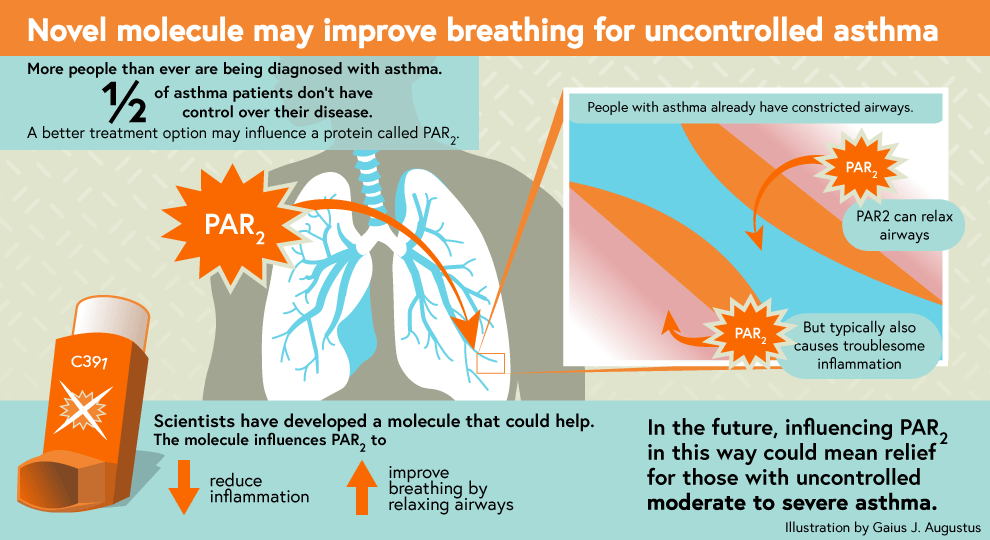Infographic Timelapse – Novel molecule may improve asthma
Recently, I had the great opportunity to talk to

Novel molecule may improve breathing for uncontrolled asthma
I was surprised to learn that more people are getting asthma nowadays than ever before. Even more surprising is that half of
Their research led them to study a pathway that includes a protein called
Protease-Activated Receptor-2 (PAR2). Many allergens that cause asthma contain enzymes that break down proteins and activate PAR2 in airways and wreak havoc by causing inflammation. Because inflammation can make breathing harder, scientists became interested in PAR2. But
PAR2 actually has multiple functions that affect our ability to breathe. It can relax airways, a boon to asthmatics who have restricted airways. But because the protein can also cause excess inflammation, the relaxation that PAR2 is responsible for is not effective.
So, if PAR2 controls both the ability to relax pathways and make them more inflamed, can this be useful to treat asthma patients whose disease is uncontrolled?
A new molecule may hold the answer. This molecule, called C91, is the result of a scientific collaboration between the Boitano lab, including Candy Rivas, and the labs of Josef Vagner, PhD (Associate Research Professor at the University of BIO5 Research Institute, Director of the Ligand Discovery Laboratory, and Research Associate Professor of Pharmacology at the University of Arizona) and Theodore Price, PhD (Professor of Neuroscience, Program Head of Neuroscience, BS, and Eugene McDermott Professor at University of Texas at Dallas). C391 has shown promise in the lab. It inhibits PAR2, blocking its ability to activate. However, this inhibition blocks the pathway toward inflammation. This leaves PAR2 free to continue along the pathway toward relaxing airways. This is especially useful for a type of asthma that is triggered by an allergy.
C391 has shown promise in the lab. It inhibits PAR2, blocking its ability to activate. However, this inhibition blocks the pathway toward inflammation. This leaves PAR2 free to continue along the pathway toward relaxing airways. This is especially useful for a type of asthma that is triggered by an allergy.
It is still early in its testing in the lab, but C391 is a ray of hope for the future of treatment for patients with uncontrolled moderate to severe allergic asthma.
Video Timelapse
If you’ve read this far, I hope you’re interested in how I make my infographics.

